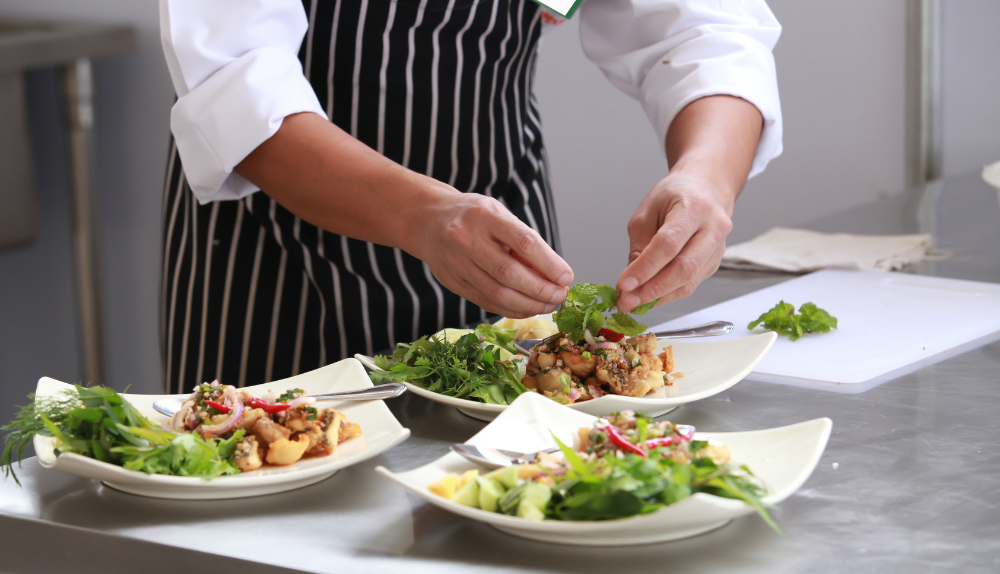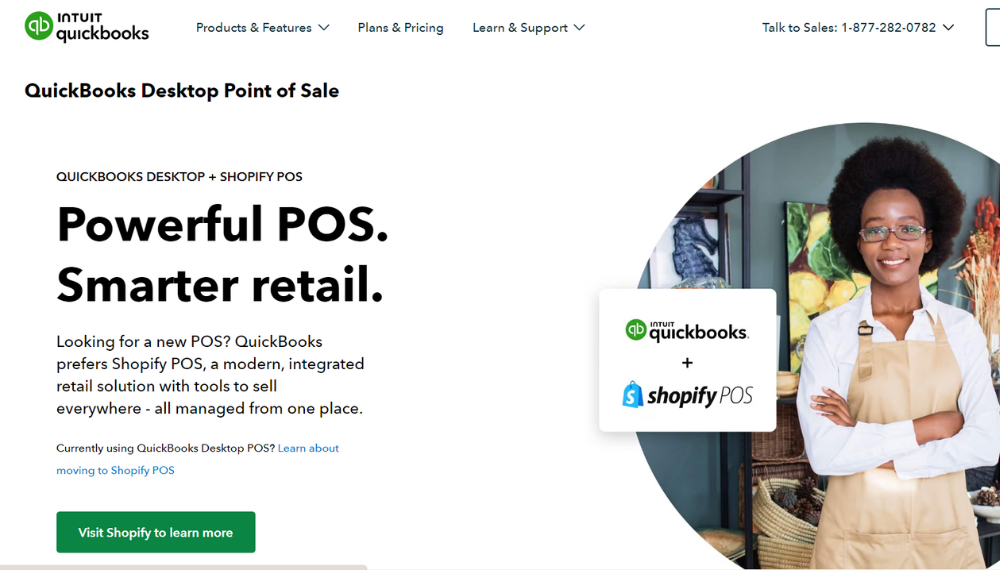Controlling food costs is essential for restaurants to maintain profitability and remain operational. For many restaurants, food costs represent the single largest expense, often ranging between 25% to 35% of total costs. High food costs can quickly eat into profit margins and even cause losses. Therefore, restaurants must implement effective strategies to closely monitor and manage this expense and control food cost in a restaurant. Attention to food cost control involves menu engineering, supplier relationships, waste reduction, inventory management, and labor allocation.
 One of the most effective ways to control food costs is through careful menu engineering and planning. This involves analyzing the recipes, cost percentages, and profit margins of each menu item. When creating new menu items, restaurants should aim for a cost percentage between 20% to 30% and a target food cost ratio between 2:1 to 3:1.
Restaurants should conduct a thorough analysis of their best-selling and most profitable dishes. These popular items often have the lowest cost percentages due to economies of scale and careful recipe optimization. Menus should be refreshed periodically by removing underperforming items, updating ingredients to reflect seasonal availability and pricing, and sourcing lower-cost alternatives where possible.
Price-to-cost ratios should also be examined and adjusted to ensure sufficient margins while remaining competitive. Restaurant goers are willing to pay higher prices for quality dishes, signature items, and premium cuts, which allow for wider profit margins. However, care must be taken not to excessively mark up low-cost convenience foods and commodity ingredients.
By conducting regular menu analyses, compiling cost information for all ingredients in recipes, calculating price-to-cost ratios, and setting margin targets, restaurants can engineer menus that allow for higher profitability while still offering value to customers. Periodic menu changes, likely at least twice per year, also provide opportunities to remove unpopular dishes, modify portion sizes and ingredients, and rename items to boost sales at targeted profit levels. With a well-planned and optimized menu, food cost control becomes much more achievable.
One of the most effective ways to control food costs is through careful menu engineering and planning. This involves analyzing the recipes, cost percentages, and profit margins of each menu item. When creating new menu items, restaurants should aim for a cost percentage between 20% to 30% and a target food cost ratio between 2:1 to 3:1.
Restaurants should conduct a thorough analysis of their best-selling and most profitable dishes. These popular items often have the lowest cost percentages due to economies of scale and careful recipe optimization. Menus should be refreshed periodically by removing underperforming items, updating ingredients to reflect seasonal availability and pricing, and sourcing lower-cost alternatives where possible.
Price-to-cost ratios should also be examined and adjusted to ensure sufficient margins while remaining competitive. Restaurant goers are willing to pay higher prices for quality dishes, signature items, and premium cuts, which allow for wider profit margins. However, care must be taken not to excessively mark up low-cost convenience foods and commodity ingredients.
By conducting regular menu analyses, compiling cost information for all ingredients in recipes, calculating price-to-cost ratios, and setting margin targets, restaurants can engineer menus that allow for higher profitability while still offering value to customers. Periodic menu changes, likely at least twice per year, also provide opportunities to remove unpopular dishes, modify portion sizes and ingredients, and rename items to boost sales at targeted profit levels. With a well-planned and optimized menu, food cost control becomes much more achievable.
 Proper purchasing decisions and strong supplier relationships are another important factors in managing food costs. Restaurants should compare products and prices from multiple suppliers to ensure they are getting the best deals. When switching suppliers, it is important to do a proper cost-benefit analysis that factors in not just the upfront price but also the true total costs including shipping fees, order minimums, spoilage risks, and product consistency.
Negotiating with suppliers for better discounts, incentives, and loyalty programs can significantly lower purchasing costs over time. Asking suppliers for a 1% to 5% volume discount or offering more frequent business in exchange for lower pricing can yield substantial savings. Additionally, purchasing in bulk whenever possible, especially for non-perishable staples, takes advantage of economies of scale and reduces the costs of individual units.
For consistency and convenience, some restaurants choose to outsource purchasing to a distributor or broadline foodservice company that offers a centralized ordering system. This simplifies the ordering process and ensures standard pricing for comparable products. However, prices may be slightly higher compared to negotiating directly with individual suppliers. Restaurants must weigh the tradeoffs between lower costs versus convenience and reliability.
Finally, developing long-term relationships with key suppliers based on mutual trust and consistency helps ensure the best possible pricing while maintaining product and service quality. Suppliers value loyalty from consistent customers and may offer preferential deals for it. Restaurants should provide frequent communication, on-time payments, order forecasts, and flexibility to build strong partnerships that benefit both sides. With the right purchasing strategies and supplier relationships in place, restaurants can potentially reduce food costs by 5% to 25%.
Proper purchasing decisions and strong supplier relationships are another important factors in managing food costs. Restaurants should compare products and prices from multiple suppliers to ensure they are getting the best deals. When switching suppliers, it is important to do a proper cost-benefit analysis that factors in not just the upfront price but also the true total costs including shipping fees, order minimums, spoilage risks, and product consistency.
Negotiating with suppliers for better discounts, incentives, and loyalty programs can significantly lower purchasing costs over time. Asking suppliers for a 1% to 5% volume discount or offering more frequent business in exchange for lower pricing can yield substantial savings. Additionally, purchasing in bulk whenever possible, especially for non-perishable staples, takes advantage of economies of scale and reduces the costs of individual units.
For consistency and convenience, some restaurants choose to outsource purchasing to a distributor or broadline foodservice company that offers a centralized ordering system. This simplifies the ordering process and ensures standard pricing for comparable products. However, prices may be slightly higher compared to negotiating directly with individual suppliers. Restaurants must weigh the tradeoffs between lower costs versus convenience and reliability.
Finally, developing long-term relationships with key suppliers based on mutual trust and consistency helps ensure the best possible pricing while maintaining product and service quality. Suppliers value loyalty from consistent customers and may offer preferential deals for it. Restaurants should provide frequent communication, on-time payments, order forecasts, and flexibility to build strong partnerships that benefit both sides. With the right purchasing strategies and supplier relationships in place, restaurants can potentially reduce food costs by 5% to 25%.
 One of the most effective - yet often overlooked - ways to control food costs is by reducing waste. Restaurants lose significant amounts of money due to both physical waste (spoilage, overproduction) and financial waste (over portioning, freebies). Implementing strict waste controls and policies can make a huge impact.
To control physical waste, restaurants should establish standardized portion sizes and recipes for all menu items. Accurate measurements and adherence to recipes ensure consistency while minimizing waste. Consistent portioning also allows servers and bartenders to accurately take and relay orders.
Daily tracking of waste amounts - including spoiled products, burned items, sent-backs, and expired ingredients - helps establish a waste percentage baseline. From there, restaurants can set waste reduction targets and measure performance to identify issues and opportunities.
Proper inventory management is key to reducing waste. Establishing par levels and FIFO ("first in, first out") protocols helps minimize expired ingredients and spoilage. Regular inventory counts and proper food storage - including temperature-controlled refrigeration - extend product life and freshness.
Financial waste from over-portioning and free food can also be curtailed through policies, controls, and employee training. Restaurants should establish clear guidelines around employee meals, "comping" items, and doggy bags to reduce abuse. Servers and chefs also need ongoing education about the impact of oversized portions on food costs.
Overall, a culture of reducing waste at all levels must be ingrained in restaurant operations. With the right systems, technology, training, and leadership, restaurants can potentially cut waste-related costs by 10% to 30%. And every crumb saved is a crumb that drops straight to the bottom line.
One of the most effective - yet often overlooked - ways to control food costs is by reducing waste. Restaurants lose significant amounts of money due to both physical waste (spoilage, overproduction) and financial waste (over portioning, freebies). Implementing strict waste controls and policies can make a huge impact.
To control physical waste, restaurants should establish standardized portion sizes and recipes for all menu items. Accurate measurements and adherence to recipes ensure consistency while minimizing waste. Consistent portioning also allows servers and bartenders to accurately take and relay orders.
Daily tracking of waste amounts - including spoiled products, burned items, sent-backs, and expired ingredients - helps establish a waste percentage baseline. From there, restaurants can set waste reduction targets and measure performance to identify issues and opportunities.
Proper inventory management is key to reducing waste. Establishing par levels and FIFO ("first in, first out") protocols helps minimize expired ingredients and spoilage. Regular inventory counts and proper food storage - including temperature-controlled refrigeration - extend product life and freshness.
Financial waste from over-portioning and free food can also be curtailed through policies, controls, and employee training. Restaurants should establish clear guidelines around employee meals, "comping" items, and doggy bags to reduce abuse. Servers and chefs also need ongoing education about the impact of oversized portions on food costs.
Overall, a culture of reducing waste at all levels must be ingrained in restaurant operations. With the right systems, technology, training, and leadership, restaurants can potentially cut waste-related costs by 10% to 30%. And every crumb saved is a crumb that drops straight to the bottom line.
Ways To Control Food Cost In A Restaurant
When done correctly, food cost control allows restaurants to price menu items competitively while still making a reasonable profit. In this article, we will explore the best ways for restaurants to reduce food costs and improve food cost percentages. We will cover techniques related to menu planning, negotiation and purchasing, waste elimination, technology utilization, and staff training.Menu Engineering and Planning
 One of the most effective ways to control food costs is through careful menu engineering and planning. This involves analyzing the recipes, cost percentages, and profit margins of each menu item. When creating new menu items, restaurants should aim for a cost percentage between 20% to 30% and a target food cost ratio between 2:1 to 3:1.
Restaurants should conduct a thorough analysis of their best-selling and most profitable dishes. These popular items often have the lowest cost percentages due to economies of scale and careful recipe optimization. Menus should be refreshed periodically by removing underperforming items, updating ingredients to reflect seasonal availability and pricing, and sourcing lower-cost alternatives where possible.
Price-to-cost ratios should also be examined and adjusted to ensure sufficient margins while remaining competitive. Restaurant goers are willing to pay higher prices for quality dishes, signature items, and premium cuts, which allow for wider profit margins. However, care must be taken not to excessively mark up low-cost convenience foods and commodity ingredients.
By conducting regular menu analyses, compiling cost information for all ingredients in recipes, calculating price-to-cost ratios, and setting margin targets, restaurants can engineer menus that allow for higher profitability while still offering value to customers. Periodic menu changes, likely at least twice per year, also provide opportunities to remove unpopular dishes, modify portion sizes and ingredients, and rename items to boost sales at targeted profit levels. With a well-planned and optimized menu, food cost control becomes much more achievable.
One of the most effective ways to control food costs is through careful menu engineering and planning. This involves analyzing the recipes, cost percentages, and profit margins of each menu item. When creating new menu items, restaurants should aim for a cost percentage between 20% to 30% and a target food cost ratio between 2:1 to 3:1.
Restaurants should conduct a thorough analysis of their best-selling and most profitable dishes. These popular items often have the lowest cost percentages due to economies of scale and careful recipe optimization. Menus should be refreshed periodically by removing underperforming items, updating ingredients to reflect seasonal availability and pricing, and sourcing lower-cost alternatives where possible.
Price-to-cost ratios should also be examined and adjusted to ensure sufficient margins while remaining competitive. Restaurant goers are willing to pay higher prices for quality dishes, signature items, and premium cuts, which allow for wider profit margins. However, care must be taken not to excessively mark up low-cost convenience foods and commodity ingredients.
By conducting regular menu analyses, compiling cost information for all ingredients in recipes, calculating price-to-cost ratios, and setting margin targets, restaurants can engineer menus that allow for higher profitability while still offering value to customers. Periodic menu changes, likely at least twice per year, also provide opportunities to remove unpopular dishes, modify portion sizes and ingredients, and rename items to boost sales at targeted profit levels. With a well-planned and optimized menu, food cost control becomes much more achievable.
Purchasing and Supplier Relationships
 Proper purchasing decisions and strong supplier relationships are another important factors in managing food costs. Restaurants should compare products and prices from multiple suppliers to ensure they are getting the best deals. When switching suppliers, it is important to do a proper cost-benefit analysis that factors in not just the upfront price but also the true total costs including shipping fees, order minimums, spoilage risks, and product consistency.
Negotiating with suppliers for better discounts, incentives, and loyalty programs can significantly lower purchasing costs over time. Asking suppliers for a 1% to 5% volume discount or offering more frequent business in exchange for lower pricing can yield substantial savings. Additionally, purchasing in bulk whenever possible, especially for non-perishable staples, takes advantage of economies of scale and reduces the costs of individual units.
For consistency and convenience, some restaurants choose to outsource purchasing to a distributor or broadline foodservice company that offers a centralized ordering system. This simplifies the ordering process and ensures standard pricing for comparable products. However, prices may be slightly higher compared to negotiating directly with individual suppliers. Restaurants must weigh the tradeoffs between lower costs versus convenience and reliability.
Finally, developing long-term relationships with key suppliers based on mutual trust and consistency helps ensure the best possible pricing while maintaining product and service quality. Suppliers value loyalty from consistent customers and may offer preferential deals for it. Restaurants should provide frequent communication, on-time payments, order forecasts, and flexibility to build strong partnerships that benefit both sides. With the right purchasing strategies and supplier relationships in place, restaurants can potentially reduce food costs by 5% to 25%.
Proper purchasing decisions and strong supplier relationships are another important factors in managing food costs. Restaurants should compare products and prices from multiple suppliers to ensure they are getting the best deals. When switching suppliers, it is important to do a proper cost-benefit analysis that factors in not just the upfront price but also the true total costs including shipping fees, order minimums, spoilage risks, and product consistency.
Negotiating with suppliers for better discounts, incentives, and loyalty programs can significantly lower purchasing costs over time. Asking suppliers for a 1% to 5% volume discount or offering more frequent business in exchange for lower pricing can yield substantial savings. Additionally, purchasing in bulk whenever possible, especially for non-perishable staples, takes advantage of economies of scale and reduces the costs of individual units.
For consistency and convenience, some restaurants choose to outsource purchasing to a distributor or broadline foodservice company that offers a centralized ordering system. This simplifies the ordering process and ensures standard pricing for comparable products. However, prices may be slightly higher compared to negotiating directly with individual suppliers. Restaurants must weigh the tradeoffs between lower costs versus convenience and reliability.
Finally, developing long-term relationships with key suppliers based on mutual trust and consistency helps ensure the best possible pricing while maintaining product and service quality. Suppliers value loyalty from consistent customers and may offer preferential deals for it. Restaurants should provide frequent communication, on-time payments, order forecasts, and flexibility to build strong partnerships that benefit both sides. With the right purchasing strategies and supplier relationships in place, restaurants can potentially reduce food costs by 5% to 25%.
Waste Reduction and Controls
 One of the most effective - yet often overlooked - ways to control food costs is by reducing waste. Restaurants lose significant amounts of money due to both physical waste (spoilage, overproduction) and financial waste (over portioning, freebies). Implementing strict waste controls and policies can make a huge impact.
To control physical waste, restaurants should establish standardized portion sizes and recipes for all menu items. Accurate measurements and adherence to recipes ensure consistency while minimizing waste. Consistent portioning also allows servers and bartenders to accurately take and relay orders.
Daily tracking of waste amounts - including spoiled products, burned items, sent-backs, and expired ingredients - helps establish a waste percentage baseline. From there, restaurants can set waste reduction targets and measure performance to identify issues and opportunities.
Proper inventory management is key to reducing waste. Establishing par levels and FIFO ("first in, first out") protocols helps minimize expired ingredients and spoilage. Regular inventory counts and proper food storage - including temperature-controlled refrigeration - extend product life and freshness.
Financial waste from over-portioning and free food can also be curtailed through policies, controls, and employee training. Restaurants should establish clear guidelines around employee meals, "comping" items, and doggy bags to reduce abuse. Servers and chefs also need ongoing education about the impact of oversized portions on food costs.
Overall, a culture of reducing waste at all levels must be ingrained in restaurant operations. With the right systems, technology, training, and leadership, restaurants can potentially cut waste-related costs by 10% to 30%. And every crumb saved is a crumb that drops straight to the bottom line.
One of the most effective - yet often overlooked - ways to control food costs is by reducing waste. Restaurants lose significant amounts of money due to both physical waste (spoilage, overproduction) and financial waste (over portioning, freebies). Implementing strict waste controls and policies can make a huge impact.
To control physical waste, restaurants should establish standardized portion sizes and recipes for all menu items. Accurate measurements and adherence to recipes ensure consistency while minimizing waste. Consistent portioning also allows servers and bartenders to accurately take and relay orders.
Daily tracking of waste amounts - including spoiled products, burned items, sent-backs, and expired ingredients - helps establish a waste percentage baseline. From there, restaurants can set waste reduction targets and measure performance to identify issues and opportunities.
Proper inventory management is key to reducing waste. Establishing par levels and FIFO ("first in, first out") protocols helps minimize expired ingredients and spoilage. Regular inventory counts and proper food storage - including temperature-controlled refrigeration - extend product life and freshness.
Financial waste from over-portioning and free food can also be curtailed through policies, controls, and employee training. Restaurants should establish clear guidelines around employee meals, "comping" items, and doggy bags to reduce abuse. Servers and chefs also need ongoing education about the impact of oversized portions on food costs.
Overall, a culture of reducing waste at all levels must be ingrained in restaurant operations. With the right systems, technology, training, and leadership, restaurants can potentially cut waste-related costs by 10% to 30%. And every crumb saved is a crumb that drops straight to the bottom line.





